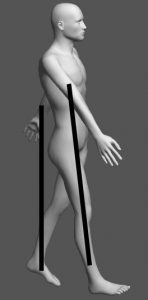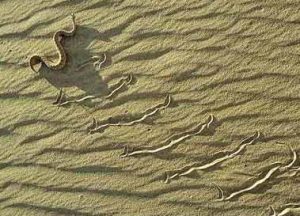Locomotion (Upd: Mar 07, ’21)

What causes us to move as a single unit or a body half? What resonates (or even spicier, what is the shadow) that so happens to move us in such a way? Once the qualia is found, this is what is doing the locomoting.
Body Half & Nanba
This type of locomotion utilizes rotation from one leg followed by another in order to get from one place to another. This movement is what happens when your side extremities move together (same arm, same leg). Vertical halves of the body alternate locomoting forward.
Nanba walking takes on this form and is used in both Noh and Kabuki as well as traditional Japanese walking in general. Walking in this way gave little arm movement. The right shoulder is always on top of the right hip and vise-versa. The ash walk automatically implies this type of walk.
Single Unit/Bird Walk
This type of movement involves utilizing the weight of the whole body to throw you off balance, which will force the body to catch up. To be more precise with a single unit, you can try not separating the foot stops but instead having a double-footed skip (this is only shown once in the following video). Example qualia: bird walk
Hop/Frog & Rabbit
This is the type of locomotion used by frogs and rabbits. At least two legs are to leave the floor for this. The rabbit exhibits a forward (arrow dimension), motion, whereas the frog utilizes a sudden separation and re-connection of head-tail curve.
Shuffle/Sidewinder Snake Feet
Shuffling the feet flat is one way to get from point A to B. Try variations, simultaneous internal rotations and external rotations and parallel rotations (one foot rotating internally as the other rotates externally). Also don’t forget to shuffle while changing levels (high, medium, low). Example qualia: Your feet are two sidewinder snakes trying to get from one place to the other. See more on sidewinder movement below.
Roll/Rolling Stone
Whole body rolling can be executed both on a wall or floor/ground. Example qualia: Feel and push every millimeter of connection between the body and the hard surface when rolling. Experiment with many varying surfaces of the body. If within a group, begin with the performance stage position Rock Garden (see section by same title). One can also add the qualia of the stone by being specific about what type of mineral/crystal it is.
Perpetual Floating Limbs/Logtopus
The torso will be the only point of contact with the hard surface while executing this roll. You can take on various qualias of the limbs such as water, air, sway, or baby. Example qualia-world: You are a chimeric being whose torso is a log and limbs are octopus limbs (head and tailbone are ones too). To get from one place to the other you roll, but your various arms are perpetually floating.
Quadrupedal
This is 4-legged movement. Not for all animals, but for many, the movement dynamic is very similar to that of the human walk (for more information see section Walk).

Exercise 1: Ball Tumbling
Tumble a ball with the nose across the space.
Exercise 2: String/Rope/Tape Army Crawl
Set up ropes or strings at a low level and crawl under them. Taking the activity to a set of stairs is also recommended.
De/reterritorialized Feet
When the feet are deterritorialized, their usual human function leaves, and get reterritorialized somewhere else. With the following example (sidwind), it’s as if the function of the human legs have left and relocated to the torso. The sidewinder snake uses two parts of the torso as if it were feet. Any part of the body, however, can be made to turn into feet. Walk from just your sit bones. Walk from just your shoulders (plough yoga shape).
Sidewind
This is the type of locomotion of caenophidian snakes. See Figure 11.2 and video below.
Partial List of Locomotor & Nonlocomotor Movements
This list (without the parenthesis) comes from Helen Landalf and Pamela Gerke, and is used to teach children how to move. Go through the entire list and especially mix and match them!² In parenthesis are example qualia/qualia-worlds associated with the following.
Locomotor
crawl (bug), gallop (horse gallop), hop (bunny hop), jump (suddenly frightened cat jump), leap (leaping over a puddle), roll (snow ball rolling down mountain), run (running from a wasp), scoot (you have an itchy butt and the floor helps you scratch it), slide (ice skating), slither (an eel in a swamp), tiptoe (tiptoe into the sleeping dragon’s chamber to steal his cookies), walk (old man walk). LOCOMOTION is also an image schema in contemporary metaphor theory.7
Nonlocomotor (stationary)
bend, carve, dab, flick, float, glide, poke, press, punch, shake, slash, spin, squirm, stretch, swing, turn, twist, wiggle, wring
